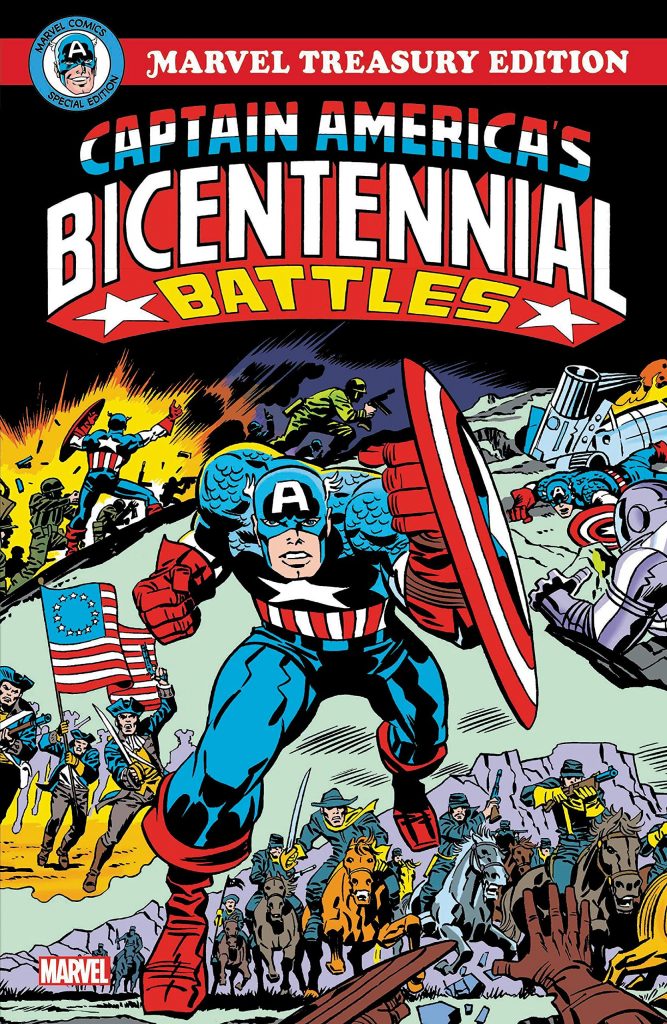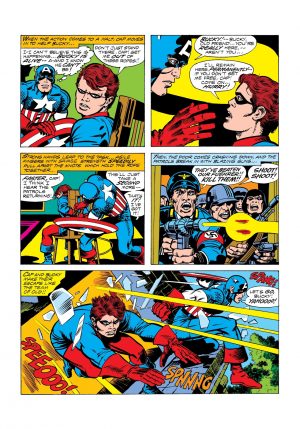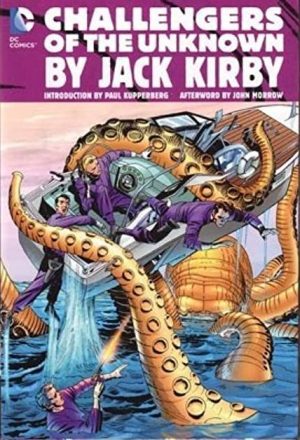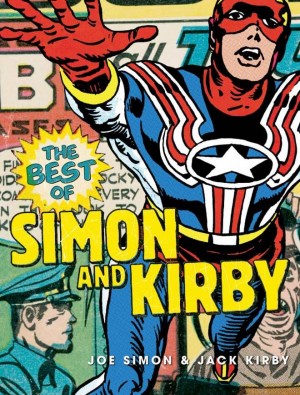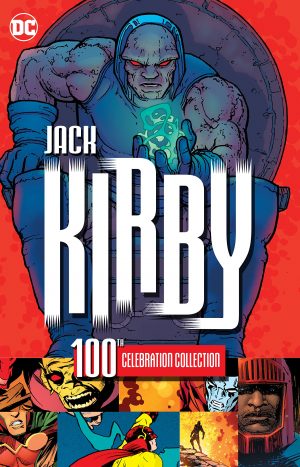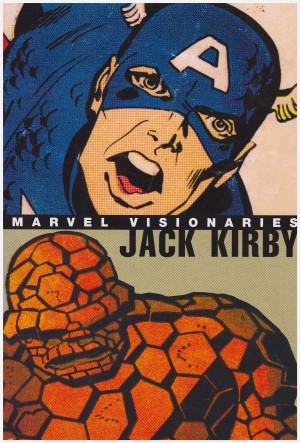Review by Ian Keogh
Jack Kirby returned to Marvel in 1976 and his highest profile assignment was to write and draw the adventures of Captain America, the hero he’d created with Joe Simon back in 1940. Seeing as the American Bicentennial celebrations lasted all year, what better way for Marvel to reintroduce Kirby and to celebrate by taking Mr. Red, White and Blue himself and reinforcing his patriotism. The resulting eighty pages were issued as an oversized treasury edition, and this is a facsimile on better paper stock with bonus material.
While much of Kirby’s subsequent Captain America is crying out for re-assessment, ‘Bicentennial Battles’ doesn’t really hit the mark. Kirby starts the action early, and keeps it going, but there’s too little point to much of what happens. Cap is transported back to pivotal moments in US history, and while it’s nice to see Kirby illustrating colonial America, gangsters, and the civil war, each time reinforcing Cap’s heroism, the story skips too much and the intended spiritualism is unconvincing. What still transmits is Kirby’s idea of the USA as a land of opportunity where everyone has an equal chance. If you don’t buy into that, and see Kirby’s view as reinforcing the myth at the expense of the truth, scenes showing that a ghetto kid who studies hard has the world ahead of him ring as hollow and patronising. It’s clear the optimistic view is Kirby’s own and no insult is intended.
It’s also clear that Kirby relished drawing this skim through American history, and the oversized format presents his art art beautifully, particularly on the better quality paper of the reissued edition. Herb Trimpe and Frank Giacoia ink most pages, but the most distinctive inking is that joyously provided by Barry Windsor-Smith when Cap is sent back to World War II. Smith starts by imitating Joe Sinnott, but then imposes his own style. The combination of Kirby’s energy with Smith’s delicacy raises an already thrilling sequence where Cap is reunited with Bucky for a quick rumpus with Hitler and the Red Skull, Kirby later re-imagining the latter as Hessian soldier in colonial days. Cap meets Benjamin Franklin and Busby Berkeley, his costume inspires Betsy Ross to create the American flag, he fights against slave owners, futuristic soldiers and a shark, and the art for every single encounter has energy and resonance.
Part of the frustration about Bicentennial Battles is the desire to see Captain America explore more of the circumstances in which he finds himself. With Kirby intending to cover as much of the previous two hundred years as possible, that can’t happen, so snippets it is.
You’ll miss out on the oversize presentation, but Bicentennial Battles is also available in other formats combined with more Kirby Captain America. It’s obviously part of the paperback Bicentennial Battles, and is also in Marvel Masterworks: Captain America Vol. 10, and in less desirable reduced black and white form in Essential Captain America Vol. 5.
Not included in those, or the original edition, is the bonus material of the 1976 Marvel calendar, featuring twelve pin-ups of Marvel characters in illustrations reflecting the battles for independence in 1776. Starting with Frank Robbins’ Invaders and ending with Jim Mooney’s Avengers crossing the Delaware, not everything is an item you’d want to frame, but that’s possibly the case for Frank Brunner’s moody horror heroes, while Herb Trimpe’s Hulk in uniform is also great.
